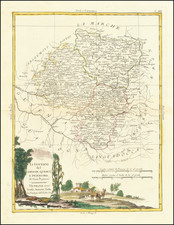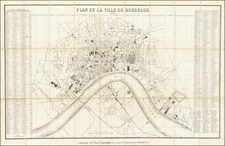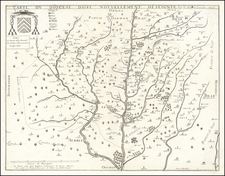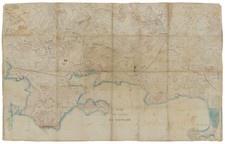This pictorial map of Nice, created by O. Poisson and published in 1950 by Bonfant & Rampelberg, offer a vivid image of the city as it was in the mid-20th century.
Designed to appeal to tourists, the map is both a functional guide and a visual celebration of Nice's allure on the French Riviera.
The map positions the viewer above the Baie des Anges, looking northwards upon the cityscape of Nice, and showing the city’s notable attractions.
One of the most prominent features depicted is the Promenade des Anglais, a sweeping thoroughfare along the seafront that has long been synonymous with the leisurely elegance of Nice. This iconic promenade, illustrated with tiny figures that suggest the daily parade of visitors and locals alike, encapsulates the blend of relaxation and sophistication that the Riviera offers.
The Victorine Studios, a hub for the film industry, are also highlighted, acknowledging Nice's contribution to the arts and its cinematic significance. The studios were at the heart of French film production, drawing international attention to the city and contributing to its cosmopolitan aura.
Further inland, the map showcases the Castle of Nice, complete with its famous waterfall. This historic site, perched on a hill, overlooks the city and offers a visual narrative of Nice’s layered history, from its strategic military significance to its current status as a cultural landmark. Not far from the castle, the map illustrates Notre Dame de Nice, a testament to the city's religious heritage and architectural grandeur.
The map’s detailed depiction of roads, many lined with the trees characteristic of the region, suggests a city that is accessible and inviting. The inclusion of train stations and parks highlights Nice's infrastructure and green spaces, factors important to tourists and residents alike.
The city’s coat of arms, prominently placed in the upper right corner, is not merely decorative. It serves as a symbol of civic pride and identity, linking the contemporary city to its historical roots and traditions.
Published in the aftermath of World War II, at a time when the tourism industry was reviving along the French Riviera, this map is an artifact of its era. It reflects the optimism of the time and the desire to promote Nice as a destination of choice for visitors from around the world.















![(Seven Years' War) [Large contemporary British manuscript plan of the Bay and Battle of Quiberon]](https://storage.googleapis.com/raremaps/img/small/103273.jpg)
